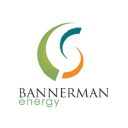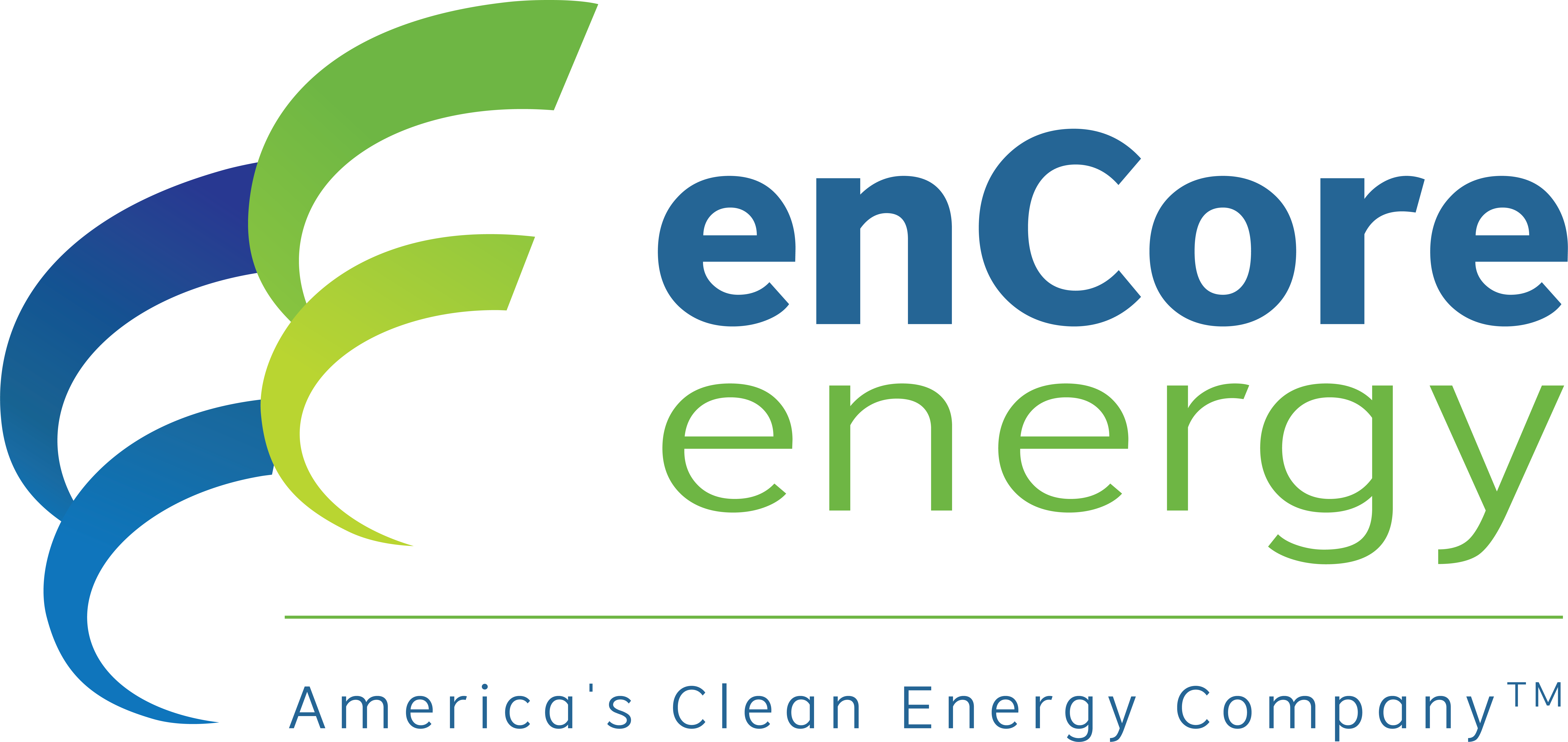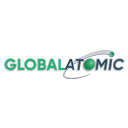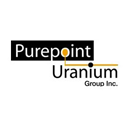Nuclear Renaissance: Western Nations' Fuel Surge in Uranium and Nuclear Power Adoption
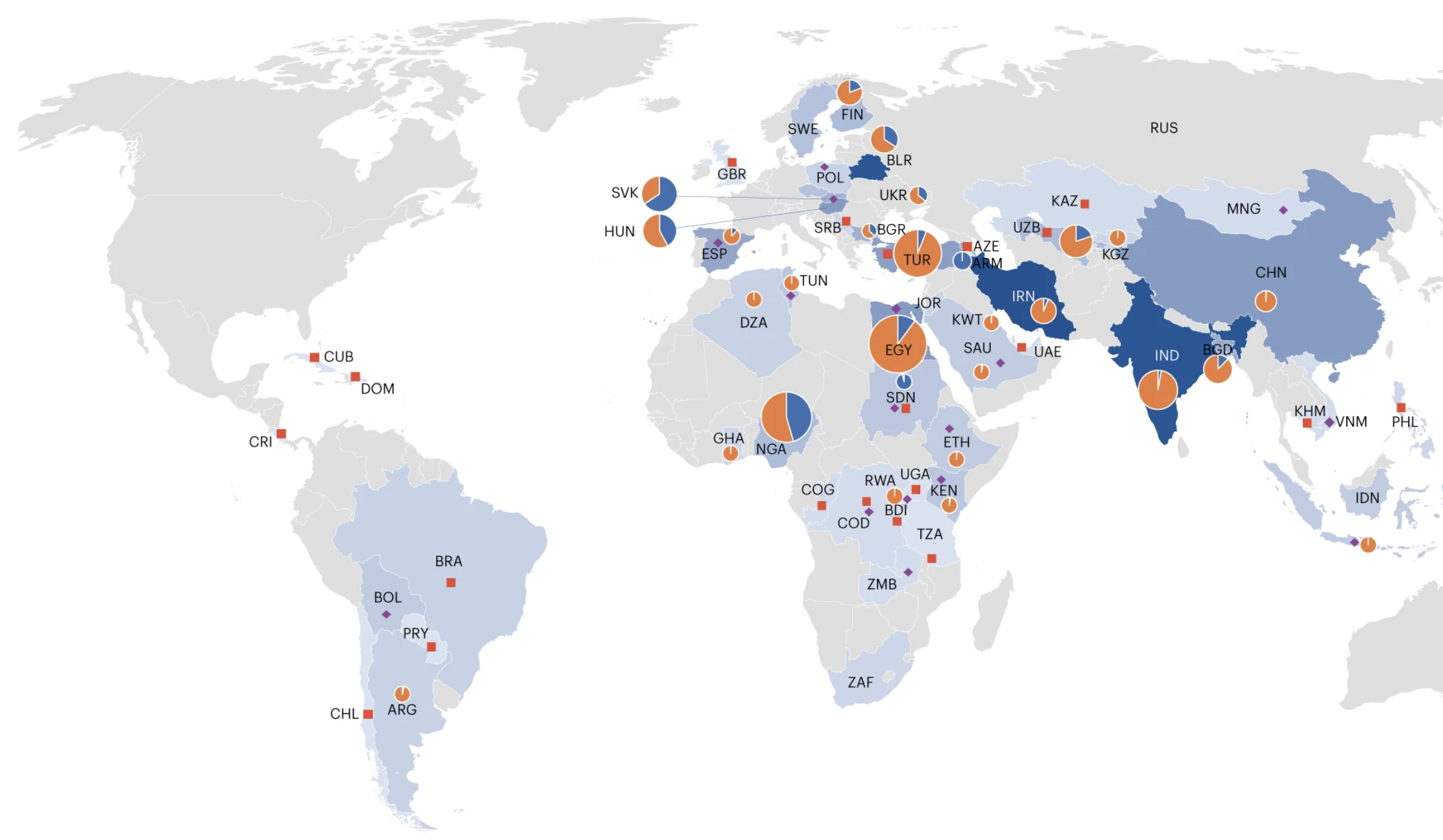
Governments worldwide are embracing nuclear power to meet climate goals and ensure energy security. The US, UK, France, and BRIC countries are heavily investing in nuclear, while Australia debates lifting its ban.
- Global nuclear power adoption is gaining momentum due to energy security concerns and climate goals.
- United States is taking significant steps to support nuclear energy, including new legislation and ambitious capacity targets.
- Australia is debating lifting its nuclear ban, while the UK and France are expanding their nuclear programs.
- BRIC countries, especially China and India, are heavily investing in nuclear power expansion.
- The growing nuclear trend is creating investment opportunities in uranium and nuclear technology companies.
Nuclear Global Renaissance as Energy Security Concerns Mount
Governments around the world are increasingly turning to nuclear power as a key pillar of their energy strategies. Mounting concerns over energy security, climate change, and the need for reliable baseload power are driving a resurgence in nuclear energy adoption. Western countries, in particular, are taking significant steps to support the development and deployment of new nuclear technologies.
Nuclear Power Gains Momentum in the United States
The U.S. Senate has unanimously approved H.R. 1042, known as the Prohibiting Russian Uranium Imports Act. This law prohibits the importation of low-enriched uranium (LEU) from Russia or any Russian entity. Effective until at least 2040, the legislation allows the Energy Secretary to grant limited waivers for LEU imports if no other sources are available to support U.S. reactor operations. This measure marks a major effort to decrease U.S. reliance on Russian nuclear fuel and establish stable conditions in the domestic market for the long term.
Nuclear power is receiving renewed attention from both lawmakers and the executive branch in the United States. The recent passage of the ADVANCE Act (Accelerating Deployment of Versatile, Advanced Nuclear for Clean Energy Act) by Congress marks a significant legislative endorsement of nuclear energy. This bipartisan bill aims to streamline regulations, support advanced reactor development, and bolster U.S. leadership in the global nuclear industry.
The Department of Energy has set an ambitious goal of tripling the country's nuclear capacity. This would require a massive increase in uranium consumption from around 50 million pounds per year currently to potentially 150 million pounds or more. In May 2024, the White House unveiled a suite of measures designed to reduce risks associated with new nuclear reactor development and construction. These initiatives include efforts to support existing plants, advance reactor demonstrations, and address barriers such as licensing reforms and supply chain gaps.
The Biden administration has backed up this goal with several billion dollars in funding to support the domestic uranium industry, including the reshoring of uranium conversion and enrichment capabilities.
"To reach our goal of net zero by 2050, we have to at least triple our current nuclear capacity in this country. That means we’ve got to add 200 more gigawatts by 2050," said U.S. Energy Secretary Jennifer Granholm.
Australia Debates Lifting Ban on Nuclear Power
Australia, a country with vast uranium resources but no nuclear power plants, is currently embroiled in a debate over lifting its long-standing ban on nuclear energy. The conservative Liberal-National coalition is pushing for a feasibility study into nuclear power, arguing that it could provide a reliable, low-carbon source of baseload electricity. However, the Labor party and the Greens remain opposed, citing concerns over waste storage and the high cost of nuclear compared to renewables.
The nuclear energy debate has taken center stage in recent months. The country, which has long maintained a ban on nuclear power, is now grappling with calls to reconsider its position. The opposition Liberal Party has announced plans to build Australia's first nuclear power plants as early as 2035, arguing that the current government's renewable energy policies are insufficient to meet the nation's decarbonization goals.
"Nuclear power should be on the table for consideration as part of our future energy mix," said House Standing Committee on the Environment and Energy Chairman Ted O'Brien. "We owe it to Australians to look at this technology with an open mind."
UK and France Double Down on Nuclear
Across Europe, attitudes towards nuclear power are evolving, albeit at different paces. UK and France are leading the charge in nuclear power adoption. France, already a leader in nuclear energy, is doubling down on its commitment. The country plans to construct new reactors and extend the lifespan of existing ones as part of its energy security and climate strategy.
The UK government has committed to building up to 8 new nuclear reactors by 2030, with a goal of generating 25% of the country's electricity from nuclear by 2050. France, which already derives over 70% of its electricity from nuclear, plans to build 6 new reactors and extend the lives of existing ones.
"Nuclear power is essential for achieving our climate goals and ensuring a secure, independent energy supply," said French President Emmanuel Macron.
Germany's Nuclear Phase-Out Faces Criticism
Germany, which had previously decided to phase out nuclear power, has shown signs of reconsidering its position. While the country officially shut down its last nuclear plants in 2022-2023, ongoing energy security concerns and climate targets have sparked debates about potentially reopening some facilities or investing in new nuclear technologies. The country's reliance on coal and natural gas to fill the gap left by nuclear has led to increased greenhouse gas emissions and higher electricity prices. Some experts argue that Germany's nuclear phase-out was a mistake and that the country should reconsider its stance.
BRIC Countries Embrace Nuclear Power
Outside of the Western world, BRIC countries (Brazil, Russia, India, and China) are also heavily investing in nuclear power. While Western nations debate the merits of nuclear power, BRIC countries (Brazil, Russia, India, and China) have generally maintained strong support for nuclear energy expansion.
China and India, in particular, are aggressively expanding their nuclear capacities as part of their efforts to meet growing energy demands while reducing reliance on fossil fuels. China, in particular, has the world's most ambitious nuclear expansion plans, with over 50 reactors under construction or planned.
China's role in the uranium market cannot be overstated, as it is projected to account for approximately 70% of the current global growth in nuclear power. This surge in Chinese demand creates a substantial opportunity for uranium producers, especially those positioned outside of the traditional supply regions. African producers, like Bannerman Energy, are particularly well-situated to capitalize on this growth and potentially sell to multiple markets including China, Western countries, Canada, the U.S., and Australia. The geographic location and relative geopolitical neutrality allow serving both Eastern and Western markets, providing a strategic advantage in an increasingly polarized global market.
This flexibility is becoming increasingly valuable as geopolitical tensions rise between Russia and the West, and concerns grow over long-term access to Kazakh supply. Russia and India are also significant players in the global nuclear industry, with Russia being a major exporter of nuclear technology and India aiming to generate 25% of its electricity from nuclear by 2050. Russia, despite international sanctions, continues to be a major player in the global nuclear industry, both in terms of domestic power generation and the export of nuclear technology. Brazil, while having a smaller nuclear program, has shown interest in expanding its nuclear capacity in the coming decades.
The Strengthening Investment Thesis for Nuclear Power
The growing global momentum behind nuclear power is creating a compelling investment thesis for the uranium market and nuclear technology companies. With demand for uranium expected to outpace supply in the coming years, and governments providing policy support and funding for the industry, investors are taking notice.
"The stars are aligning for a sustained bull market in uranium," said John Ciampaglia, CEO of Sprott Asset Management. "The fundamentals are stronger than ever, and we're seeing more and more investors waking up to the opportunity."
As countries grapple with the urgent need to decarbonize their economies while maintaining reliable energy supplies, nuclear power is emerging as a critical part of the solution. As more countries commit to nuclear energy as part of their long-term energy strategies, demand for uranium and nuclear technologies is expected to increase.
The tailwinds for nuclear adoption are growing stronger, and with it, the investment thesis for uranium and nuclear technology companies. Investors who position themselves early in this trend could stand to benefit from the long-term growth potential of the nuclear industry.
International Collaboration: The Sapporo 5 Initiative
Recognizing the need for a coordinated approach to nuclear energy development, five major nuclear energy nations – the United States, Canada, France, Japan, and the United Kingdom – formed the "Sapporo 5" alliance in 2023. This partnership aims to mobilize $4.2 billion in investments to increase enriched uranium production capacity free from Russian influence.
The Sapporo 5 collaboration has already yielded tangible commitments from major nuclear fuel manufacturers to expand their enrichment capacities. For example, Urenco has announced plans to increase capacity at its New Mexico facility by 15% by 2025, while also expanding plants in the Netherlands and Germany.
Summary
Governments worldwide are embracing nuclear power to meet climate goals and ensure energy security. The US, UK, France, and BRIC countries are heavily investing in nuclear, while Australia debates lifting its ban. Germany's nuclear phase-out faces criticism. The growing momentum behind nuclear power is strengthening the investment thesis for uranium and nuclear technology companies.
Investors are closely watching developments in reactor technologies, fuel cycle innovations, and regulatory changes that could impact the economics of nuclear power. The passage of supportive legislation like the ADVANCE Act in the U.S. and potential policy shifts in countries like Australia could create new opportunities in the nuclear sector.
Increased Demand: As more countries adopt nuclear power, global demand for uranium is likely to rise, potentially driving up prices.
Supply Chain Considerations: Russia's dominance in uranium enrichment (approximately 45% of global capacity) highlights the need for diversified supply chains, which could benefit uranium producers in other countries.
Western Pushback: Efforts by Western nations to reduce dependence on Russian nuclear fuel, such as the U.S. ban on Russian enriched uranium imports, will create opportunities for non-Russian uranium producers and nuclear technology companies.
Long-Term Contracts: The nature of nuclear power projects, with their decades-long lifecycles, suggests a stable, long-term demand for uranium.
Challenges & Considerations
However, challenges remain. Public perception, waste management concerns, and the high upfront costs of nuclear projects continue to be significant hurdles. Additionally, the growth of renewable energy technologies provides competition in the clean energy space.
While the outlook for nuclear energy is improving, investors should be aware of potential challenges:
- High upfront costs: Nuclear power projects typically require significant capital investments and long lead times.
- Regulatory hurdles: Despite efforts to streamline processes, nuclear projects often face complex regulatory requirements.
- Public perception: Concerns about safety and waste management continue to influence public opinion on nuclear energy.
- Competition from renewable energy: The rapid growth and decreasing costs of renewable technologies provide strong competition in the clean energy space.
Companies to Watch
Energy Fuels
Energy Fuels offers investors diversified exposure to two critical minerals – uranium and rare earths – both poised for growth amid decarbonization and electrification trends. The company's profitable uranium business generated $100 million in net income in 2023, providing financial flexibility to invest in strategic rare earth acquisitions at an opportune time when valuations are depressed. Energy Fuels' integrated business model mitigates risk and enables greater value capture across the supply chain. With existing permitted infrastructure and technical expertise, the company can quickly ramp up production using its White Mesa mill capacity and permitted mines.
Bannerman Energy
Bannerman Energy is well-positioned to capitalize on the looming uranium supply deficit with its world-class Etango Project in Namibia. The company has completed a definitive feasibility study on an 8 million ton per annum development and has recently evaluated expansion and extension options to potentially increase production or extend the mine life. With the mining license in hand and A$35 million in cash, Bannerman is advancing detailed engineering and strategic funding discussions. Detailed engineering work by Wood Group is nearing completion, with tendering suggesting capital costs in line with the DFS estimate.
The company aims to secure long-term contracts for 75-80% of production, capable to serve both Eastern and Western buyers (China, Canada, the U.S., and Australia). This not only provides Bannerman with a wider customer base but also potentially allows them to command a premium for their uranium due to the strategic importance of diversified supply chains. As utilities and governments worldwide seek to secure stable, long-term uranium supplies from politically neutral sources, Bannerman's African projects could become increasingly attractive, potentially leading to favorable off-take agreements and investment opportunities.
Global Atomic
Global Atomic offers investors a unique combination of near-term uranium production potential and existing cash-flowing operations. The company's flagship Dasa Uranium Project in Niger boasts significant reserves and robust economics, with a 23.75-year mine life producing 68.1M lbs of U3O8.
Recent political uncertainty in Niger has created some development risk for the Dasa Project. The closure of the Benin border prevented access to the port of Cotonou, the closest and historically most used port for Niger, and has necessitated the use of alternative and extended routes which has caused some delays. However, the company is proactively addressing these challenges with government assistance. Global Atomic has maintained positive relations with the government in expediting shipments and making progress on the ground.
While this situation may be temporarily depressing the company's value, it also presents a potential opportunity for investors as the project advances. With offtake agreements in place and mine development on track, Global Atomic is well-positioned to become a significant uranium supplier. Additionally, the company's Turkish Zinc Joint Venture provides steady cash flow to support corporate activities.
enCore Energy
enCore Energy is a US-based uranium producer with a clear focus on domestic production. The company has two production facilities currently operating in South Texas, with plans to ramp up production to 3 million pounds per year by the end of 2026. enCore has already signed uranium supply contracts with six US nuclear utilities, providing revenue visibility and downside protection.
The company's recent deal with Boss Energy for a $70 million cash injection allows it to accelerate its development plans and potentially pursue strategic acquisitions. enCore's US-centric strategy aligns well with the growing emphasis on domestic uranium supply by US utilities. The company's use of in-situ recovery (ISR) methods and its presence in favorable regulatory environments like Texas position it for efficient production growth.
ATHA Energy
ATHA Energy is positioning itself as a major player in the uranium sector with a focus to uranium exploration in Canada. The company has assembled a vast land package of over 7 million acres, primarily in the Athabasca and Thelon Basins. ATHA's strategy involves exploring at scale in early-stage projects while also acquiring more advanced resources backed by institutional investors to be a significant player in the current uranium cycle. ATHA's approach of investing across the exploration risk spectrum could provide investors with exposure to potential high-impact discoveries while mitigating risk through more advanced projects. The company's strong technical and capital markets expertise, combined with its dominant land position in top-tier jurisdictions, positions it well to capitalize on the strengthening uranium market.
IsoEnergy
IsoEnergy Ltd. is a uranium company with operations across Canada, the U.S., Australia, and Argentina. The company has a diverse portfolio of uranium resources at various stages of development, potentially allowing it to benefit from rising uranium prices in different timeframes. IsoEnergy's flagship project is the Larocque East Project in Canada's Athabasca Basin, which includes the Hurricane deposit, notable for its high-grade uranium resource. Additionally, the company owns several permitted, previously operational uranium and vanadium mines in Utah, which are currently on standby but could potentially resume production quickly if market conditions improve. IsoEnergy has a toll milling agreement with Energy Fuels Inc. for these Utah properties.
Premier American Uranium
Premier American Uranium Inc. (PUR) is a uranium exploration and development company concentrating on projects in the United States. The company holds significant land positions in two major uranium-producing areas: Wyoming's Great Divide Basin and Colorado's Uravan Mineral Belt. These regions have a history of uranium production and contain historic mineral resources. PUR is currently conducting work programs to advance its portfolio of projects. The company is supported by investors including Sachem Cove Partners and IsoEnergy, and employs a team with extensive experience in the U.S. uranium sector. PUR's launch coincides with a period of strong uranium market fundamentals, which are reportedly at their most favorable in ten years.
Purepoint Uranium
Purepoint Uranium offers a compelling investment opportunity for those seeking exposure to rising uranium prices and discovery potential in Saskatchewan's Athabasca Basin. The company's flagship projects, Hook Lake and Smart Lake, are joint ventures with industry leaders Cameco and Orano, providing financial support and technical expertise. Purepoint's experienced team employs a disciplined approach to exploration, utilizing advanced geophysical and geochemical techniques to identify high-priority drill targets. With a deep pipeline of projects and ongoing drill programs, the company offers multiple chances for a high-grade uranium discovery.
Ur-Energy
Ur-Energy, an established ISR uranium producer focused on Wyoming, is well-positioned to capitalize on the strengthening uranium market with its flagship Lost Creek mine has been producing for over a decade, demonstrating its low-cost operations and scalability potential. With Lost Creek licensed for 1.2 million pounds per year and the processing plant permitted for 2.2 million pounds per year, Ur-Energy has the flexibility to ramp up production and toll process material from other projects. As Ur-Energy moves to increase production at Lost Creek and advance its Shirley Basin project, investors can benefit from the company's unique mix of near-term growth and long-term optionality in the context of rising uranium prices.
References:
- E&E News (June 2024). "How A Nuclear Bill Became This Congress’ First Big Energy Win" Retrieved from: https://www.eenews.net/articles/how-a-nuclear-bill-became-this-congress-first-big-energy-win/
- Power (June 2024). "The ADVANCE Act—Legislation Crucial for a U.S. Nuclear Renaissance—Clears Congress. Here's a Detailed Breakdown" Retrieved from: https://www.powermag.com/the-advance-act-legislation-crucial-for-a-u-s-nuclear-renaissance-clears-congress-heres-a-detailed-breakdown/
- ABC News (2024). "Australian opposition puts nation's first nuclear power plants in its energy plan ahead of elections" Retrieved from: https://abcnews.go.com/Business/wireStory/australian-opposition-puts-nations-nuclear-power-plants-energy-111240750
- The Lowly Insititute (February 2024). "Australia’s Nuclear Energy Debate Doesn’t Have to be Partisan". Retrieved from: https://www.lowyinstitute.org/the-interpreter/australia-s-nuclear-energy-debate-doesn-t-have-be-partisan
Analyst's Notes




Subscribe to Our Channel
Stay Informed










